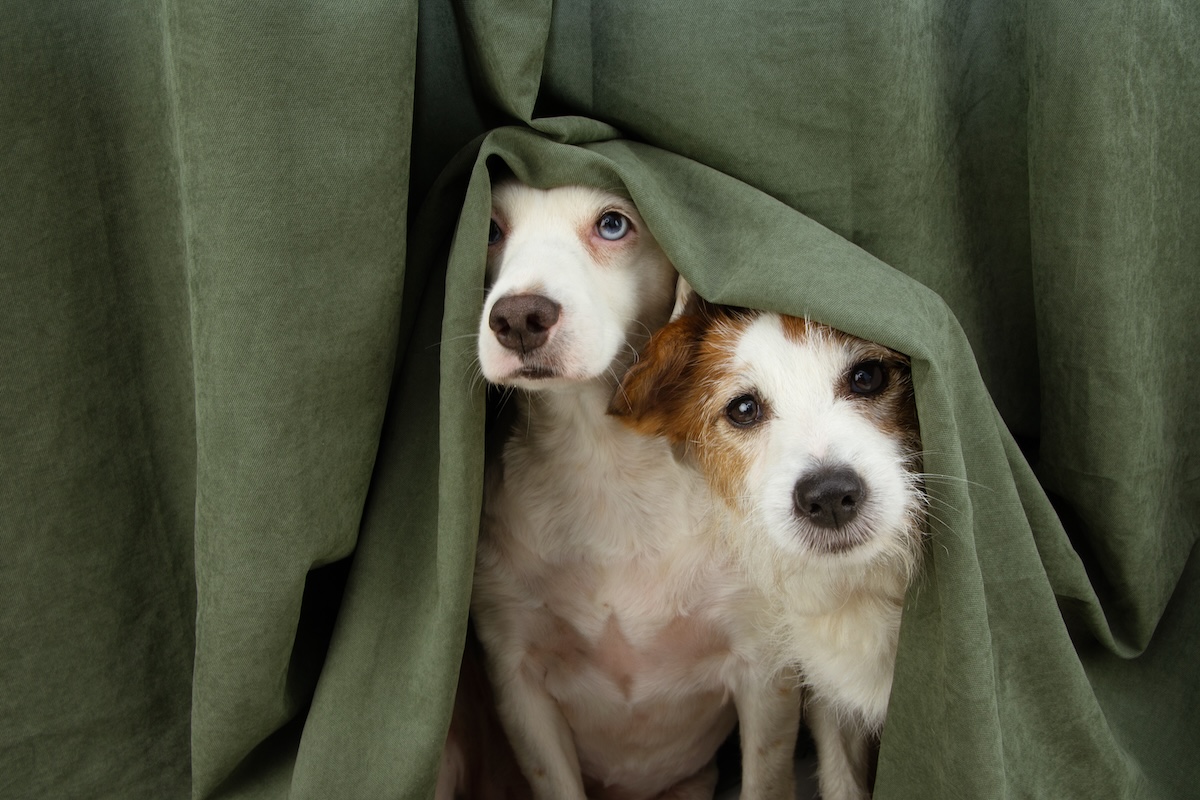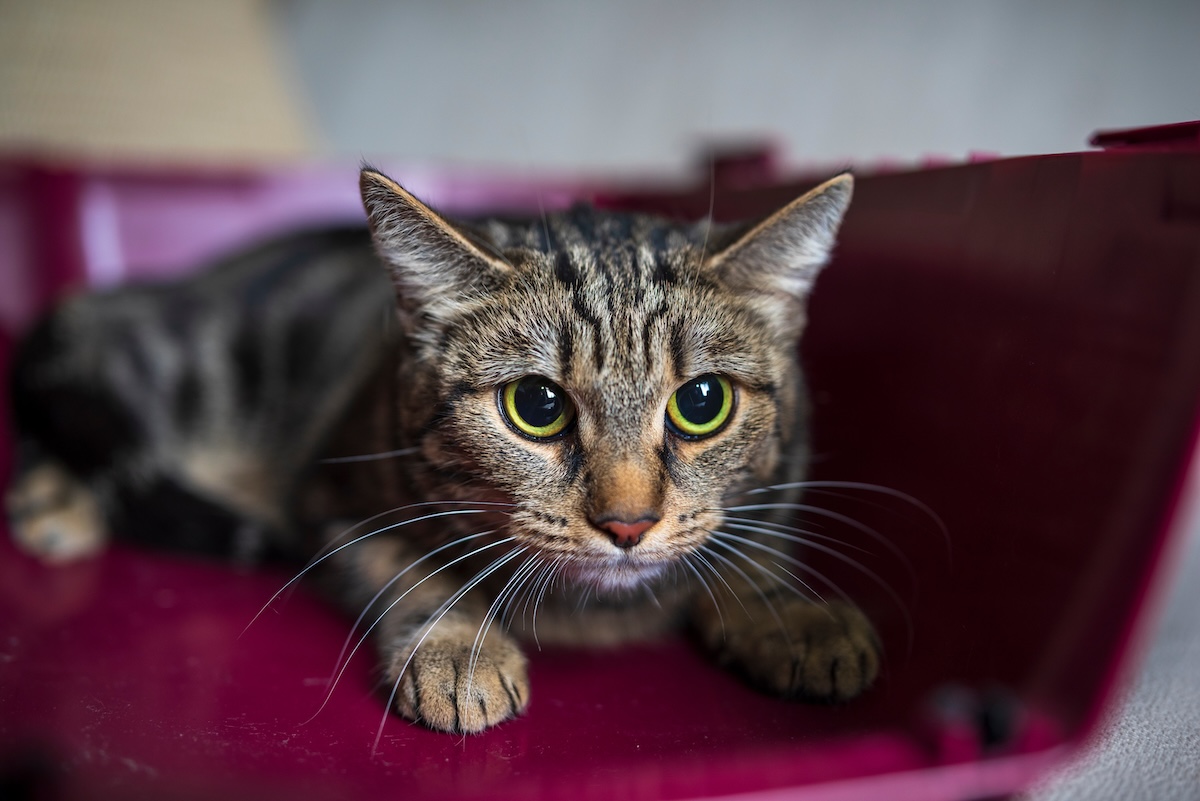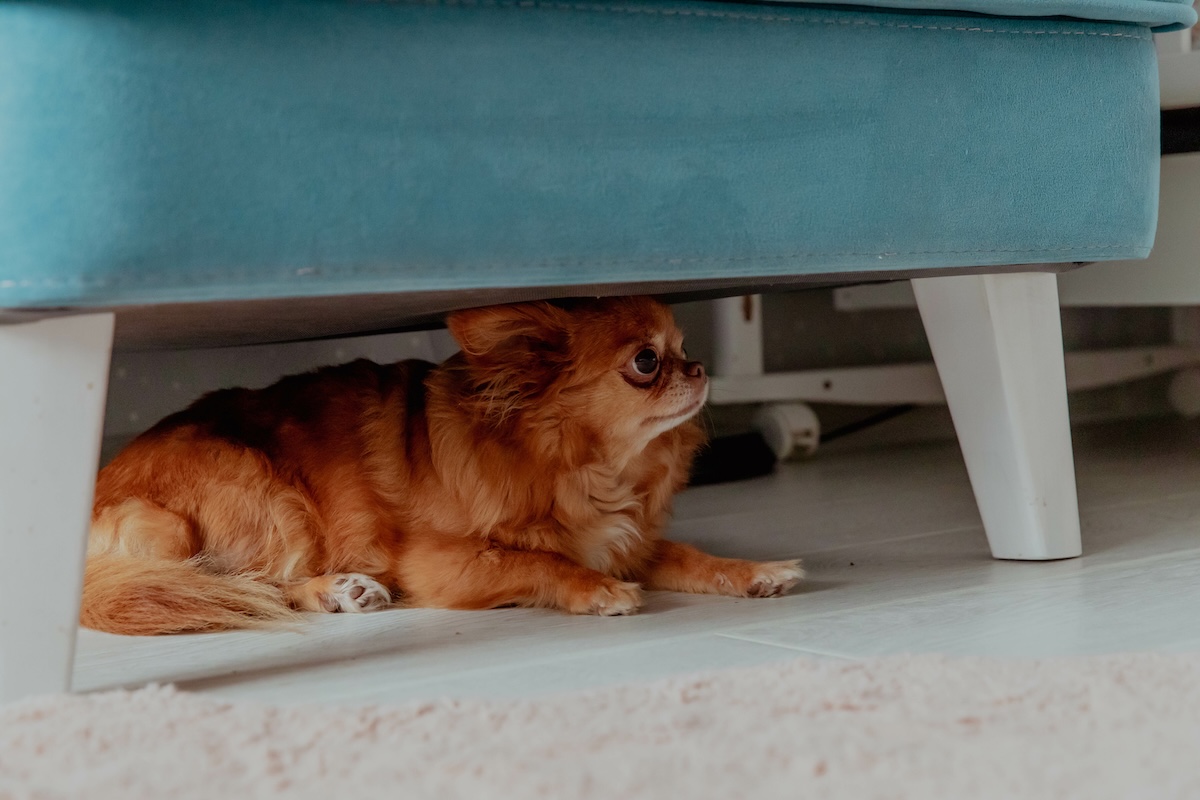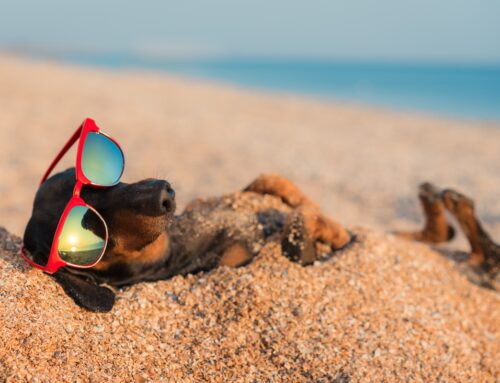For humans, fireworks and thunderstorms might be just an exciting part of summer or a relaxing rainy afternoon. But for pets, these booming sounds and flashing lights can trigger intense fear and anxiety. The unpredictable nature of these events can make animals feel unsafe and unsure of what’s happening, and keeping pets calm can become a struggle. Unfortunately, this often leads to destructive behavior, escape attempts, or health concerns for our furry friends.
At Animal Care Center, we understand that your pet’s emotional well-being is just as important as their physical health. That’s why we’ve put together this in-depth guide for keeping pets calm, safe, and secure during storms and celebratory explosions alike.
Why Pets Fear Loud Noises
Heightened Senses
Both dogs and cats have much sharper hearing than humans. Dogs can hear up to four times farther away than people, and cats even more so. That firework going off in the distance might seem tolerable to you—but to your pet, it’s an overwhelming, thunderous roar.
Lack of Understanding
Pets don’t understand what fireworks or thunder are. They can’t reason that the sounds aren’t a real threat. That confusion creates fear, which then leads to anxiety and stress behaviors.
Loss of Control
The unpredictability and intensity of the sounds can create a feeling of helplessness. Unlike some other fears, such as a trip to the vet or the vacuum cleaner, thunderstorms and fireworks are inescapable. This makes pets feel trapped and unsafe in their own homes.

Common Signs of Anxiety in Pets
It’s important to be able to recognize when your pet is feeling scared so you can act quickly.
In Dogs:
- Panting and drooling even when not hot or tired
- Pacing or inability to settle down
- Trembling or shaking
- Barking, howling, or whining
- Trying to hide, escape, or dig
- Accidents in the house
- Chewing, scratching, or other destructive behavior
In Cats:
- Hiding in closets, under beds, or in cabinets
- Increased vocalization (meowing, yowling)
- Overgrooming due to stress
- Dilated pupils or ears pinned back
- Urinating outside the litter box
- Swatting or biting when approached
Knowing your pet’s normal behavior helps you spot changes quickly. Some pets show very subtle signs, so it’s important to stay alert during stressful times.
Creating a Calming Environment
Set Up a Safe Space
Create a quiet, secure space where your pet can retreat when they’re scared. This might be a closet, bathroom, or a crate covered with a blanket. Make sure it’s stocked with their favorite bed, toys, and perhaps an item of your clothing with your scent.
For cats, vertical spaces like shelves or enclosed areas such as a carrier with a blanket over it can offer a sense of safety.
Sound Masking
Use white noise machines, fans, or calming music to drown out the sounds of fireworks or thunder. There are even playlists specifically designed to calm pets available on YouTube or music apps.
Block Visual Stimuli
Draw the curtains or cover windows to block out flashes of lightning or fireworks because sudden flashes can be just as frightening as the noise.
Training for Noise Desensitization
One long-term solution to noise phobia is desensitization training. It involves playing low-volume recordings of fireworks or thunder while offering treats or play. Over time, the volume is gradually increased.
This must be done slowly and over a long period—usually several weeks or months. Done correctly, this can significantly reduce fear. If your pet’s fear is severe, consult with a professional trainer or veterinary behaviorist before starting this process.
Calming Aids and Tools
There are many tools available that can help keep your pet calm when you know a storm or firework show is coming:
Natural Calming Aids:
- Pheromone diffusers, sprays, or collars (Adaptil for dogs, Feliway for cats) mimic calming pheromones that soothe pets.
- CBD oil (pet-specific) or herbal supplements such as valerian root, chamomile, or L-theanine can help—but always consult your vet first.
- Calming treats with melatonin or other soothing ingredients can work for mild cases.
Products That Help:
- Thundershirts or anxiety wraps apply gentle pressure around the torso, creating a swaddling effect that can calm dogs.
- Snuffle mats or food puzzles keep pets engaged and focused on foraging instead of the noises.
- Eye masks or blackout kennels may help block out lightning flashes.
What to Do During the Noise Event
Stay Calm and Present
Your pet will look to you for cues. If you seem stressed or panicked, then they’ll mirror your anxiety. Speak in a calm, soft tone and avoid making a big fuss over their fearful behavior.
Don’t Punish or Force Interaction
Punishing a frightened pet can worsen their anxiety. At the same time, don’t force them out of hiding or into your lap. You’ll see success when you let them choose how they want to cope.
Offer Reassurance—On Their Terms
Some pets will want to be near you for comfort. Offer affection if they approach you, but don’t chase or corner them. Create an environment where they feel safe to come to you.
Veterinary Options for Severe Cases
If your pet’s fear is extreme and is causing health problems, danger to themselves, or distress to your household, then it may be time to involve your veterinarian.
They may recommend:
- Prescription anxiety medications such as trazodone or fluoxetine
- Sedatives for use during high-stress events like the Fourth of July
- Behavioral therapy referrals for advanced training and support
These medications are typically used short-term and under strict veterinary supervision.
Post-Storm or Post-Fireworks Recovery
After the event has passed:
- Allow your pet time to decompress and return to normal.
- Offer food, water, and comfort without pressure.
- Praise and reward calm behavior to reinforce it for next time.
- Resume normal activities such as walks, play, and meals as soon as possible. Routine is very comforting for animals.

Extra Precautions: Safety First
Every year, shelters see a spike in lost pets after fireworks displays. Make sure your pet has:
- A properly fitted collar with an up-to-date tag
- A registered microchip with current contact info
- Photos in case you need to make flyers or alerts
Secure Your Yard
If you have outdoor pets or let your dog out for potty breaks, then double-check fences, gates, and screen doors before a known noise event.
Tips for Special Situations
Puppies and Kittens
Young pets are still learning about the world, and early experiences can shape how they react in the future. So, gently expose them to low-level noises and create positive associations. The earlier you begin, the better.
Older Pets
Senior dogs and cats may suffer from age-related anxiety or cognitive decline, which then makes loud noises even harder to process. Talk to your vet about anxiety management tailored for aging pets.
Benefits of a Calm Pet
Helping your pet stay calm during storms or fireworks doesn’t just protect your furniture or prevent escapes, it improves their overall quality of life. Chronic stress has long-term health consequences, including:
- Increased heart rate and blood pressure
- Weakened immune system
- Digestive issues
- Behavioral changes
By creating a calming plan, you’re giving your pet the gift of comfort and safety.
Keeping Pets Calm is Important
Storms and fireworks are an unavoidable part of life, but your pet’s fear doesn’t have to be. With a combination of preparation, training, and support from your veterinarian and the team at Animal Care Center, keeping pets calm is easier.
If you’re struggling with how to help your pet during fireworks season or thunderstorm season, then don’t wait until the next boom to get started. Let us help you find the best approach for your unique pet.






